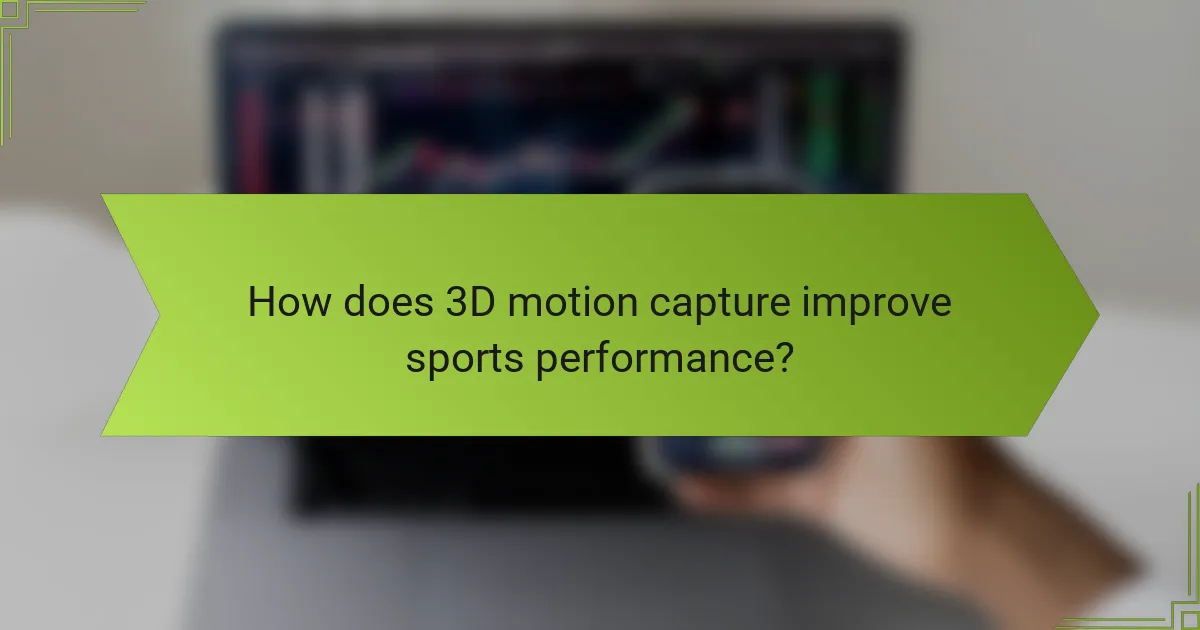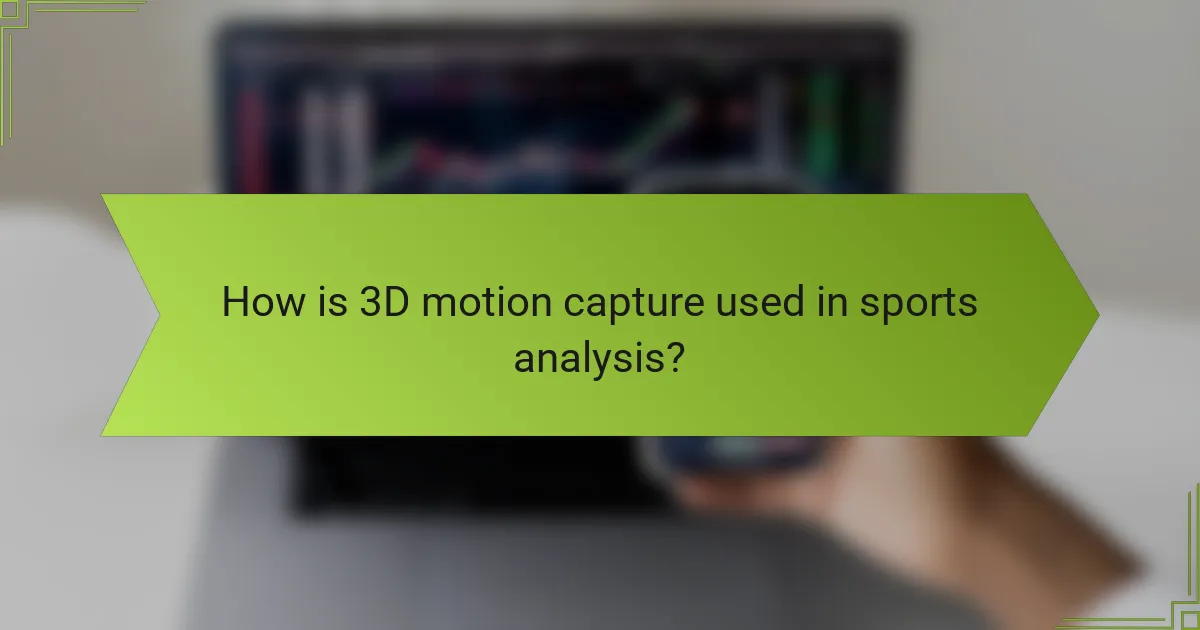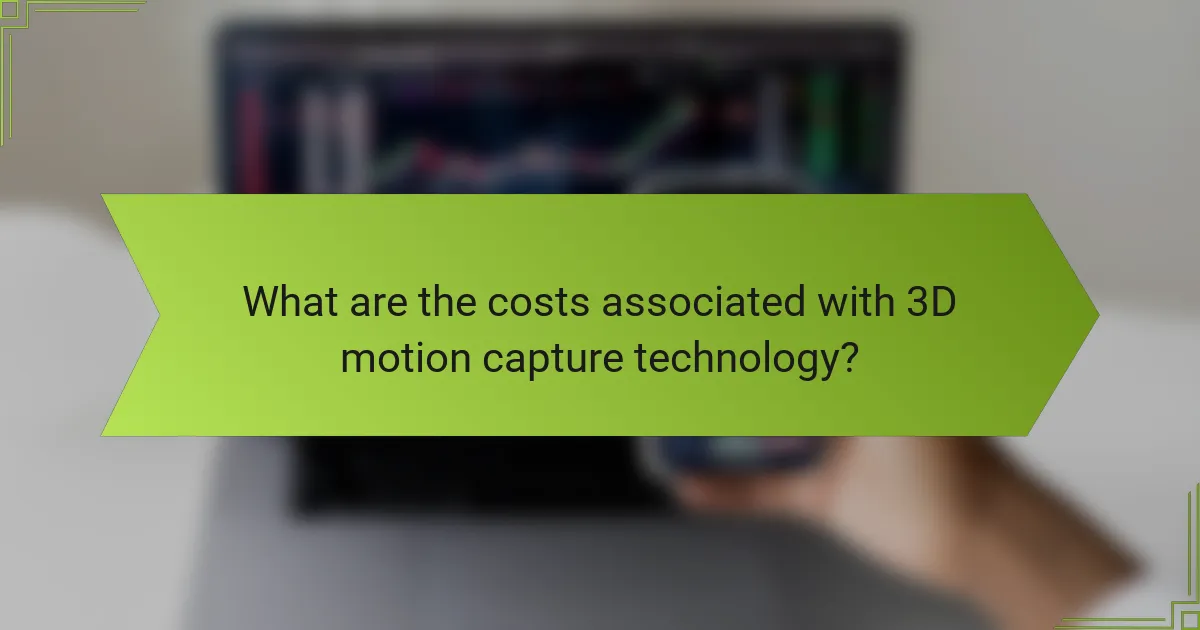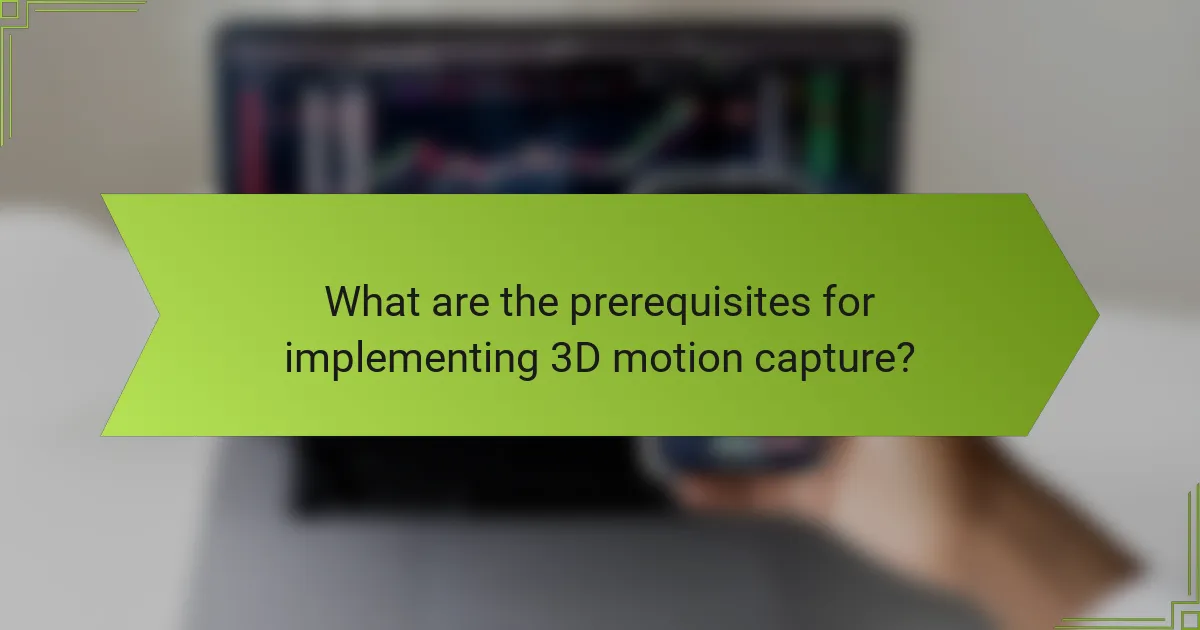3D motion capture technology revolutionizes sports performance analysis by providing in-depth insights into an athlete’s movements. By capturing motion in three dimensions, it allows coaches and trainers to identify strengths and weaknesses, refine techniques, and enhance overall performance.

How does 3D motion capture improve sports performance?
3D motion capture enhances sports performance by providing detailed insights into an athlete’s movements, allowing for precise analysis and optimization of techniques. This technology captures motion in three dimensions, enabling coaches and athletes to identify strengths and weaknesses in performance.
Enhanced biomechanical analysis
3D motion capture offers a comprehensive biomechanical analysis by tracking joint angles, velocities, and forces during athletic movements. This data helps in understanding how an athlete’s body moves and interacts with their environment, leading to tailored training programs. For example, a runner’s gait can be analyzed to improve efficiency and speed.
Using this technology, coaches can compare an athlete’s performance against established biomechanical norms, identifying areas for improvement. This comparison can lead to adjustments in technique that enhance overall performance and effectiveness in the sport.
Real-time feedback for athletes
Real-time feedback is a crucial advantage of 3D motion capture, allowing athletes to make immediate adjustments during training sessions. By visualizing their movements instantly, athletes can correct their form and technique on the spot, leading to faster learning and skill acquisition. For instance, a basketball player can adjust their shooting technique based on live data.
This immediate feedback loop fosters a more engaging training environment, where athletes can experiment with different techniques and see the effects in real time. Coaches can use this data to provide targeted advice, enhancing the athlete’s understanding of their performance dynamics.
Injury prevention strategies
3D motion capture plays a vital role in injury prevention by identifying movement patterns that may lead to injuries. By analyzing an athlete’s biomechanics, coaches can pinpoint risky behaviors or improper techniques that increase the likelihood of injury. For example, excessive knee valgus during a jump can be detected and corrected before it leads to serious issues.
Implementing injury prevention strategies based on motion capture data involves creating customized warm-up routines and strength training programs that address identified weaknesses. Regular assessments can help track progress and ensure that athletes maintain safe movement patterns throughout their training and competition.

What are the best 3D motion capture systems for athletes?
The best 3D motion capture systems for athletes include Vicon Motion Systems, OptiTrack, and Xsens Technologies. Each system offers unique features and capabilities tailored to enhance sports performance analysis.
Vicon Motion Systems
Vicon Motion Systems is renowned for its high-precision tracking technology, making it a popular choice among professional sports teams and research institutions. It utilizes optical cameras and reflective markers to capture detailed motion data, providing insights into biomechanics and performance.
When considering Vicon, note that it requires a controlled environment with ample lighting and space for optimal results. This system is ideal for in-depth analysis, but it may not be the best fit for all training scenarios due to its setup requirements.
OptiTrack
OptiTrack is another leading 3D motion capture system, known for its flexibility and ease of use. It offers both optical and inertial tracking options, allowing athletes to capture motion in various environments, from labs to outdoor settings.
This system is particularly beneficial for sports that require dynamic movement analysis, such as soccer or basketball. OptiTrack’s software provides real-time feedback, which can be crucial for immediate performance adjustments during training sessions.
Xsens Technologies
Xsens Technologies specializes in inertial motion capture, making it suitable for athletes who need mobility during their analysis. This system uses wearable sensors that track motion without the need for a fixed camera setup, allowing for greater freedom of movement.
Xsens is particularly effective for sports like gymnastics and track and field, where athletes often perform complex movements. However, the data may require more post-processing compared to optical systems, so users should be prepared for additional analysis time.

How is 3D motion capture used in sports analysis?
3D motion capture is utilized in sports analysis to accurately track and evaluate athletes’ movements. By capturing detailed motion data, coaches and trainers can assess performance, refine techniques, and compare athletes effectively.
Performance metrics evaluation
Performance metrics evaluation involves analyzing key data points such as speed, acceleration, and joint angles. Coaches can use this information to identify strengths and weaknesses in an athlete’s performance, allowing for targeted training adjustments.
Common metrics include stride length, ground reaction forces, and body posture during movement. These metrics help in setting benchmarks and tracking progress over time, often leading to improved performance outcomes.
Technique optimization
Technique optimization focuses on refining an athlete’s movements to enhance efficiency and reduce injury risk. By analyzing motion capture data, coaches can pinpoint areas where an athlete may be using excessive energy or exhibiting poor form.
For example, a runner’s arm swing can be adjusted based on motion data to improve stride efficiency. Implementing small changes based on these insights can lead to significant performance gains.
Comparative athlete analysis
Comparative athlete analysis allows coaches to evaluate multiple athletes against each other using standardized motion capture data. This can reveal differences in technique and performance that may not be visible to the naked eye.
By comparing athletes’ metrics, coaches can identify best practices and tailor training programs to emulate successful techniques. This approach is particularly useful in team sports where coordination and synergy are crucial for success.

What are the costs associated with 3D motion capture technology?
The costs associated with 3D motion capture technology can vary significantly based on several factors, including the scale of the setup and the specific applications. Generally, expenses can be categorized into initial setup costs, ongoing maintenance expenses, and software licensing fees.
Initial setup costs
Initial setup costs for 3D motion capture systems can range from several thousand to hundreds of thousands of dollars. This includes the purchase of cameras, sensors, and other necessary hardware, as well as installation and calibration services. For smaller facilities or individual athletes, entry-level systems may start in the low tens of thousands of dollars.
When planning for initial costs, consider additional expenses such as space requirements and any necessary structural modifications to accommodate the equipment. Investing in high-quality systems can lead to more accurate data, which is crucial for performance analysis.
Ongoing maintenance expenses
Ongoing maintenance expenses for 3D motion capture systems typically include regular calibration, repairs, and updates. These costs can range from a few hundred to several thousand dollars annually, depending on the complexity of the system and usage frequency. Regular maintenance is essential to ensure the accuracy and reliability of the captured data.
Budgeting for ongoing maintenance is important, as neglecting it can lead to costly repairs or inaccurate performance assessments. Establishing a routine maintenance schedule can help mitigate unexpected expenses.
Software licensing fees
Software licensing fees for 3D motion capture technology can vary widely, often ranging from a few hundred to several thousand dollars per year. These fees cover the use of specialized software for data analysis and visualization, which is critical for interpreting motion capture results effectively.
When selecting software, consider both the initial purchase price and any recurring fees for updates or additional features. Some companies offer subscription models, which can provide flexibility but may accumulate higher costs over time. Always evaluate the software’s compatibility with your hardware to avoid additional expenses.

What are the prerequisites for implementing 3D motion capture?
Implementing 3D motion capture requires specific equipment, software, and trained personnel to effectively analyze sports performance. Understanding these prerequisites ensures that athletes and coaches can leverage this technology for optimal results.
Required equipment and software
To set up a 3D motion capture system, you need specialized cameras, sensors, and software. Commonly used cameras include infrared or optical systems, which can range from a few thousand to tens of thousands of USD depending on the quality and capabilities. Software for data analysis, such as Vicon or Motion Analysis, is also essential for processing the captured data.
Additionally, markers or suits equipped with reflective or active sensors are necessary for tracking the athlete’s movements. The choice of equipment should align with the specific sports performance goals and the budget available for the project.
Training for staff and athletes
Proper training for both staff and athletes is critical to maximize the benefits of 3D motion capture. Staff members need to be proficient in operating the equipment and analyzing the data, which may require specialized courses or certifications. Athletes should also receive training on how to wear the motion capture suits and perform movements that will yield the most useful data.
Regular workshops and practice sessions can help both staff and athletes become familiar with the technology. This ensures that the data collected is accurate and relevant, ultimately leading to better performance insights and improvements.
